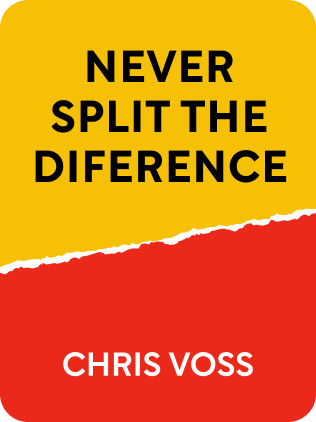

This article is an excerpt from the Shortform book guide to "Never Split the Difference" by Chris Voss and Tahl Raz. Shortform has the world's best summaries and analyses of books you should be reading.
Like this article? Sign up for a free trial here .
What is the Chris Voss “that’s right” principle? What does it mean when someone says “that’s right” in a negotiation?
According to Chris Voss, “that’s right” signals an important milestone in a negotiation. It means that your negotiating counterpart has come to embrace what you have said, and it is their way of acknowledging you seeing things their way.
Read about the Chris Voss “that’s right” principle from the former FBI hostage negotiator.
Chris Voss: “That’s Right” Is Powerful in Negotiations
According to Chris Voss, when someone says “that’s right” in a negotiation, it means that they now feel that they are dealing with someone who understands and respects their point of view.
The person saying doesn’t feel “that’s right” is a concession, either. In fact, it’s empowering to be able to say “That’s right.” Your counterpart will feel that their opinion, their way of seeing things, has truly sunk in with you.
For your counterpart, this is the best of both worlds: they get to agree with you (and forge a bond) without feeling like they’ve caved (maintaining autonomy). This satisfies their basic emotional needs for safety and autonomy.
They’ve also given you a valuable window into their true motivations and desires. You now have your counterpart’s self-confirmed view of the situation. They’ve stated their position unequivocally, which you can now use to commit them to your preferred course of action.
Getting to “That’s Right”
So how do you get your counterpart to say “That’s right?” Follow these steps below.
- Use the power of silence by letting them talk until all the emotion is drained from the conversation. Remember, people want to feel like they’re being heard.
- Offer minimal encouragement through intermittent interjections like “Yes,” “I see,” or “Ok.” This signals that you’re engaged and paying attention to what they’re saying.
- Mirror their statements to build empathy and rapport.
- Label their emotions through simple phrases like, “It seems like you’re distressed over being put in such an unfair position” to demystify their fears, force them to work through them, and show that you get it.
- Go a step further than labeling by paraphrasing. Instead of parroting back what they’re saying, put their story into your own words to demonstrate that you really get it.
Beware of “You’re Right”
As crucial as “That’s right” is, you need to watch out for the fool’s gold of “You’re right.” For your counterpart, “You’re right” is an admission of defeat, a capitulation. They don’t get the feeling of autonomy that they get from thinking that they’ve brought you around to their way of seeing things. Instead, they feel like they’re meekly submitting to your authority.
This is not where you want them to be. You want your counterpart to think that they’ve arrived at your preferred conclusion themselves. “You’re right” does the opposite: it forces them to see things your way. As a result, they’re going to be much less committed to the conclusion that they’ve reached, which can cause implementation problems.

———End of Preview———
Like what you just read? Read the rest of the world's best book summary and analysis of Chris Voss and Tahl Raz's "Never Split the Difference" at Shortform .
Here's what you'll find in our full Never Split the Difference summary :
- Lessons learned from years as an FBI hostage negotiator
- Why negotiation is about emotional appeals, not rational ones
- The 5 methods for tactical empathy, which gets you what you want by focusing on the other person's feelings






